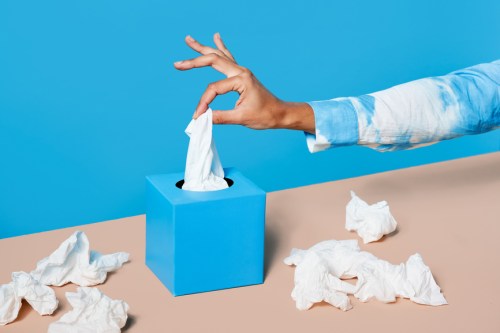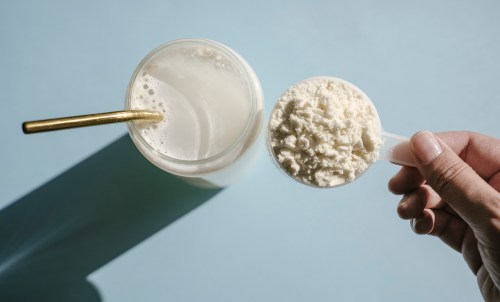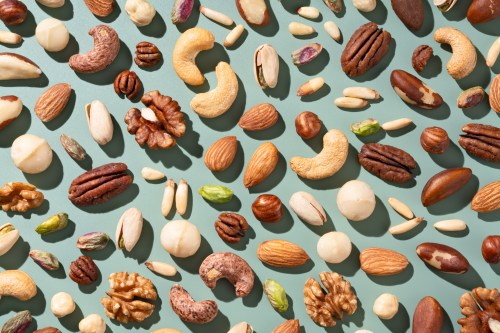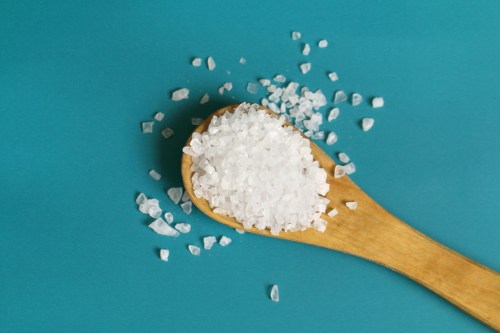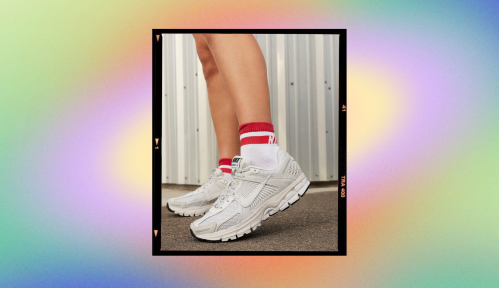Do you ever dig into a meal only to find your nose dripping like a leaky faucet within seconds? Truth be told, this happens to me on the regular… and not only when I chow down on yummy soups or stews and super spicy fare (or if my palate is in for a treat, both). Nevertheless, the term “gustatory rhinitis” has remained new to me—until, well, now-ish.
Experts in This Article
Ashley Agan, MD is an otolaryngologist (ear, nose, and throat doctor, or ENT) with UT Southwestern Medical Center.
Although it can be a bit embarrassing when I’m dining in public or in the company of others, I never thought too much about it. But lately, I’ve been pondering about the what and why behind my long-term nasal overactivity, including if something more serious could be at play.
Ahead, Ashley Agan, MD, an otolaryngologist (aka ENT doctor) with UT Southwestern Medical Center, unpacks why your nose may run when you eat and what you can do to stop it.
Gustatory rhinitis, the who-knew reason your nose runs while eating
It turns out that there’s a medical term for a food-induced runny nose: gustatory rhinitis. According to Dr. Agan, the exact mechanism of why it occurs remains unclear, but she shares where the current consensus stands. “It is hypothesized that stimulation of the trigeminal nerve causes a reflex leading to parasympathetic activation, which causes the nose to run,” she explains.
The largest and most complex of the 12 cranial nerves, the trigeminal nerve is responsible for facilitating sensations to the face, mucous membranes, and other parts of the head. In other words, stimulating it could drive that inopportune post-nasal drip when you’re trying to enjoy your meal in snot-free peace.
“Having other forms of rhinitis, like allergic rhinitis, may make patients more likely to experience gustatory rhinitis.”
—Ashley Agan, MD, otolaryngologist (ENT doctor) with UT Southwestern Medical Center
Some people may be more prone to developing gustatory rhinitis than others. “Having other forms of rhinitis, like allergic rhinitis, may make patients more likely to experience gustatory rhinitis,” Dr. Agan shares. Moreover, she says that it’s more commonly seen in older adults. Meanwhile, a 2010 review in the journal Rhinology adds that people can develop the non-immunological condition due to cranial nerve dysfunction as well as following certain surgeries and traumas.
Foods that cause gustatory rhinitis
Specific foods and drinks are most commonly associated with gustatory rhinitis, so you might want to aim to limit your intake if constantly searching for the nearest napkin grows tiring. (However, a 2008 study in the Annals of Allergy, Asthma & Immunology found that 65 percent of participants chose not to avoid their causative foods, and nearly half were unbothered by their symptoms.)
“Hot or spicy foods are the most common triggers,” says Dr. Agan. Per a 2021 review in the Journal of Clinical Medicine, the most common dietary instigators contain capsaicin, including:
- 1.Hot chili and red peppers
- 2.Cayenne
- 3.Tabasco sauce
- 4.Onions
- 5.Vinegar
- 6.Mustard
Sadly, these are all staples in my regular rotation, and my nose acts up even if I stick to colder and milder fare. What gives?
“This is a benign condition, but if it is bothersome, you should seek advice from an otolaryngologist. Typically, it can be treated quite easily with ipratropium bromide nasal spray. There is also a procedure to treat/ablate the posterior nasal nerve, which is effective as well.”
Gustatory rhinitis treatment
Dr. Agan confirms that I’m not alone, as gustatory rhinitis has the ability to rear its head when eating or drinking anything. Though inconvenient, the silver lining is that it’s not a cause for concern. “This is a benign condition, but if it is bothersome, you should seek advice from an otolaryngologist,” she shares. “Typically, it can be treated quite easily with ipratropium bromide nasal spray. There is also a procedure to treat/ablate the posterior nasal nerve, which is effective as well.”
Both are good options if you want to stop the sniffle and defeat the drip for good when it’s time to eat. But in the meantime, keep your tissues handy at the table and don’t forget to sanitize your hands post-use—especially if you’re dining family-style and handling the same condiments, drinks, and utensils.
Sign Up for Our Daily Newsletter
Get all the latest in wellness, trends, food, fitness, beauty, and more delivered right to your inbox.
Got it, you've been added to our email list.
